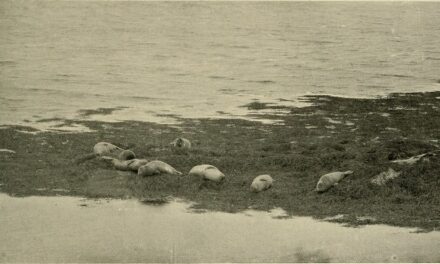
United Airlines Flight UA770 Emergency Diversion News

United Airlines Flight UA770 Emergency Landing Incident
United Airlines Flight UA770 emergency diversion shocked travelers and caught global attention. The unexpected incident highlighted the importance of airline safety. Passengers were shaken, but they remained safe thanks to quick actions. Aviation protocols were immediately activated. Emergency crews were alerted before landing. Reports quickly spread through major news outlets. Social media amplified the story.
United Airlines Flight UA770 emergency diversion became a trending topic worldwide. Travelers wanted answers. Aviation experts analyzed every detail. The Federal Aviation Administration (FAA) got involved in the investigation. Safety discussions dominated headlines. The incident reminded the world that even routine flights can face sudden risks.
What Happened on United Airlines Flight UA770?
United Airlines Flight UA770 emergency diversion unfolded during what was supposed to be a normal flight. Passengers boarded expecting a smooth journey. The aircraft took off without issues. About halfway through, the pilots detected irregularities. Warning signals appeared in the cockpit.
The captain and first officer acted immediately. Communication with air traffic controllers was established. Crew members reassured passengers, explaining the diversion process. Despite growing concern, order was maintained inside the cabin. Emergency procedures were followed step by step.
United Airlines Flight UA770 emergency diversion was executed professionally. The pilots redirected the flight to the nearest available airport. Fire and medical teams waited on the ground. Passengers safely disembarked, though some were visibly shaken.
Reasons Behind the Diversion
United Airlines Flight UA770 emergency diversion may have been caused by multiple factors. Aviation incidents rarely depend on one single reason. Technical malfunctions remain the most likely explanation. Engines, sensors, or electrical systems may trigger warning alerts.
Weather disruptions can also force diversions. Severe turbulence, storms, or lightning sometimes require immediate rerouting. Medical emergencies involving passengers or crew can also demand urgent landings. Regardless of the reason, the pilot’s decision must prioritize safety.
United Airlines Flight UA770 emergency diversion demonstrates how safety outweighs delays. While passengers faced inconvenience, their security remained the top priority.
Step-by-Step Diversion Process
United Airlines Flight UA770 emergency diversion followed a structured process. First, the pilot identified potential risks. Second, communication with air traffic control began. Third, the crew secured the cabin for emergency procedures. Fourth, ground support prepared for arrival. Finally, the aircraft landed safely.
Diversions involve coordination between multiple teams. Pilots, controllers, and ground staff must work together. Every second matters when safety is at risk. The successful handling of Flight UA770 shows the effectiveness of these systems.
Passenger Experience During the Incident
United Airlines Flight UA770 emergency diversion created mixed reactions among passengers. Some expressed fear as the captain announced the diversion. Others appreciated the calm approach of the crew. Anxiety levels rose as the plane descended rapidly.
Several passengers described the experience on social media. Photos and videos spread online within minutes. While some expressed frustration about delays, most praised the professionalism of United Airlines staff. Free refreshments and assistance were offered upon landing. Medical teams checked travelers for stress or health concerns.
United Airlines Flight UA770 emergency diversion showed that passengers value safety above speed. While the journey was interrupted, the outcome was positive. Everyone landed safely.
How the Airline Responded
United Airlines Flight UA770 emergency diversion required immediate corporate response. The airline issued a statement assuring the public. Apologies were extended to passengers. United Airlines promised a full investigation. Compensation options were offered for inconvenience.
Transparency is essential in such cases. By addressing concerns quickly, the airline limited potential backlash. According to United Airlines, customer safety remains a top priority. Quick communication reassured passengers and families waiting for updates.
United Airlines Flight UA770 emergency diversion was handled with professionalism. While questions remain, the airline’s proactive measures calmed speculation.
Aviation Experts’ Analysis
United Airlines Flight UA770 emergency diversion was studied by aviation experts. They emphasized that diversions are rare but not unusual. Every commercial pilot trains for emergency scenarios. Aircraft systems are built with redundancies to prevent disasters.
The FAA will conduct a detailed review. Investigators will examine the aircraft’s maintenance history, flight data, and crew performance. Aviation analysts suggest the quick decision prevented potential escalation.
United Airlines Flight UA770 emergency diversion may provide lessons for future safety improvements. Each incident contributes valuable knowledge to aviation research.
Impact on Airline Reputation
United Airlines Flight UA770 emergency diversion briefly raised concerns about the airline’s reliability. Reputation plays a key role in aviation. A single incident can influence passenger confidence. However, the way an airline responds can restore trust.
United Airlines acted quickly. By issuing statements and cooperating with authorities, the company minimized reputational damage. Frequent flyers often value safety records more than punctuality. Therefore, handling emergencies well can actually strengthen trust.
United Airlines Flight UA770 emergency diversion was a challenge, but the airline’s response kept confidence intact.
Lessons Learned from the Incident
United Airlines Flight UA770 emergency diversion teaches valuable lessons. Airlines must continue investing in technology upgrades. Flight crews need regular emergency training. Communication with passengers must be clear and transparent.
Passengers also learned to take safety briefings seriously. Fastening seatbelts, noting emergency exits, and listening to crew instructions can save lives.
United Airlines Flight UA770 emergency diversion highlighted how awareness and preparation reduce risks. Both airlines and passengers share responsibility for safety.
Comparison with Past Diversions
United Airlines Flight UA770 emergency diversion is part of a larger history. Similar diversions have occurred across airlines worldwide. In 2018, a United Airlines flight diverted due to engine failure. In 2020, a medical emergency forced a landing mid-route.
Comparing cases shows that quick responses consistently prevent tragedies. Pilots’ skills and airline training programs remain crucial. Aviation authorities learn from each case to enhance regulations.
United Airlines Flight UA770 emergency diversion will also contribute to future safety protocols.
Passenger Rights During Diversions
United Airlines Flight UA770 emergency diversion also raised questions about passenger rights. Travelers often wonder about compensation. Airline policies vary depending on the cause. If a diversion is due to technical faults, compensation may be available. If weather causes the diversion, compensation is often limited.
According to aviation law, safety must always come before schedules. Airlines must provide necessary assistance, including food, lodging, and rebooking when delays occur. Passengers are encouraged to review airline policies before traveling.
United Airlines Flight UA770 emergency diversion serves as a reminder that travelers should know their rights.
How Technology Prevents Future Emergencies
United Airlines Flight UA770 emergency diversion demonstrates the value of modern technology. Advanced sensors detect irregularities before they escalate. Real-time communication with air traffic control helps rerouting decisions. Predictive maintenance tools reduce mechanical risks.
Artificial intelligence is now used in aviation safety. It helps detect patterns and prevent equipment failure. Airlines also invest in stronger weather radar systems.
United Airlines Flight UA770 emergency diversion will likely lead to further technological reviews. The aviation industry continuously evolves to improve safety.
Media and Public Reaction
United Airlines Flight UA770 emergency diversion dominated headlines across global media. Major outlets like CNN and BBC covered the story extensively. Social media amplified passenger testimonies. Hashtags trended worldwide.
Public reaction was mixed. Some travelers worried about airline safety. Others praised the professionalism shown during the crisis. Debates emerged about the effectiveness of emergency protocols.
United Airlines Flight UA770 emergency diversion showed how quickly news spreads in the digital age. Transparency and clear communication were essential.
Internal Link: Related Reads
If you want more insights on aviation, safety, and technology, visit MetaMatrix Blog. You’ll find detailed guides, industry updates, and helpful resources for travelers.
Frequently Asked Questions (FAQs)
Q1: What caused United Airlines Flight UA770 emergency diversion?
A: Initial reports suggest possible technical malfunctions, though investigations are ongoing.
Q2: Was anyone injured during the incident?
A: No, all passengers and crew were safe. Emergency landing protocols were followed.
Q3: How often do diversions like this happen?
A: Diversions are rare but not unusual. They happen when safety is at risk.
Q4: Are passengers entitled to compensation?
A: Compensation depends on the cause. Technical issues often qualify, weather-related cases usually do not.
Q5: Who investigates such incidents?
A: The FAA and airline safety teams conduct investigations.
Q6: Does this affect United Airlines’ safety record?
A: Diversions prioritize safety and often strengthen an airline’s reputation.
Conclusion
United Airlines Flight UA770 emergency diversion reminded the aviation world of one critical truth: safety always comes first. While passengers faced delays and stress, their lives were protected. Pilots, crew, and emergency teams handled the situation with professionalism.
The incident sparked global attention but also reinforced trust in aviation safety systems. Passengers, airlines, and authorities all learned lessons. Technology, training, and transparency remain the pillars of safe air travel.
United Airlines Flight UA770 emergency diversion will be remembered as a test of systems that worked exactly as designed. In aviation, prevention and quick action save lives, and this case proved it once again.





















Cool Post.
Every sentence feels like a key unlocking something new and valuable.
[…] 2026 Budget Jobs Plan: A Focus on Employment Growth […]
Very good quality post
Remarkable issues here. I'm very glad to look youir post. Thanks a lot and I am takijng a look ahead…